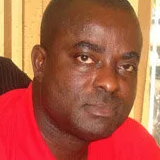For decades, the Academic Staff Union of Universities (ASUU) has wielded strikes as its most potent bargaining tool, often shutting down Nigeria’s public universities and disrupting the academic calendar. Emmanuel Addeh writes that though each industrial action is rooted in demands for better funding and welfare, it has left behind a trail of lost semesters, demoralised students, and declining standards.
Indeed, when the lecture halls fall silent and campus gates lock, it is not only semesters that are disrupted but whole careers, fragile hopes and the social fabric that feeds national progress are put on indefinite hold.
ASUU, founded as the conscience of Nigerian tertiary education, has for years become synonymous with cyclical ruptures in learning and striking at will, winning partial promises, then striking again. Almost every other year, it’s rinse and repeat. Isn’t it time to change strategy?
As it is, students, parents and the nation pay the price while the strikes deliver little lasting improvement to the public university system. That has been the story of ASUU and its many strikes.
Habit of Shutdowns
ASUU’s industrial action is not new. The union has staged repeated strikes since the late 1970s and, more relentlessly, through the freedom that the democratic era offers, has from 1999 to the present day even become more frequent.
There have been long and short walkouts, which have shut campuses for weeks and months, sometimes up to nine months in a single year. These periodic shutdowns have become an almost accepted norm in the rhythm of academic life in Nigeria.
Students have seen entire academic sessions evaporate while authorities and union leaders traded ultimatums, becoming a cycle that guarantees disruption but few enduring reforms.
Cost of Strikes
In the main, the immediate cost is obvious, including wasted tuition time, delayed graduations, stalled research and a generation that graduates later, or not at all, into a market that waits for no calendar. But the hidden costs are worse.
Repeated stoppages breed a culture of improvisation as students seek irregular alternatives, some drop out entirely, and research projects, especially long-term experiments and postgraduate work are abandoned or rendered unusable.
Besides, the national economy suffers from delayed entry of skilled graduates and the reputational damage that steers foreign collaborations and investment away from Nigerian campuses. Scholarly output falls, and with it the chance to modernise curricula and produce the knowledge needed for national development.
Indeed, studies on the educational impact of ASUU strikes make this clear: recurrent closures damage academic performance and undermine institutional planning.
Strategy Or Punishment
ASUU defends strikes as necessary leverage to extract commitments the government otherwise failed to honour, especially in the past.. There is truth in the claim that years of neglect and repeated reneging on agreements will create a readiness to strike. But defence of a struggle does not justify automaticity.
The union has, time and again, chosen total shutdowns rather than calibrated industrial tactics that minimise collateral damage to students and research. Warning strikes are often converted into stoppages; negotiations that might have been mediated and compartmentalised instead collapse into all-or-nothing showdowns.
When the union shuts universities “at every opportunity,” the tactic ceases to look like principled resistance and starts to resemble a ritual that uses students’ academic lives as bargaining chips. That tactic is, at best, ethically fraught. At worst, it betrays the very public mission that academics profess: to nurture minds, sustain inquiry and contribute constructively to national progress.
A clear reading of ASUU’s timeline reveals the scale and frequency of disruption. From the longer historical record to the repeated disruptions since 1999, strikes frequently recur with little cumulative improvement in institutional capacity.
The union appears to have a pattern. It signs agreements, obtains partial concessions or promises, call off strikes, wait while implementation lags, then strike again. The net effect has been stasis: incremental, temporary gains followed by fresh disputes and fresh closures of campuses.
This pattern has practical consequences. Universities that should be upgrading laboratories, recruiting staff, improving libraries and expanding research partnerships are instead locked in cycles of crisis management. Funding pledges for revitalisation become headline fodder rather than the basis for systemic transformation. The timeline should therefore be read not only as a record of righteous protest but as a damning ledger of lost opportunities.
ASUU’s Arguments
In recent times, the argument has not changed for ASUU. It’s mostly about the welfare of lecturers. Every government believes they have done enough for ASUU, complaining that, on the other hand, the union is not willing to make any sacrifices in return.
Last Monday, ASUU commenced a two-week warning strike following the expiration of its ultimatum to the government
According to ASUU President, Christopher Piwuna, the union’s demands include; Conclusion of the renegotiated 2009 FGN/ASUU Agreement based on Nimi Briggs Committee’s Draft Agreement of 2021; the release of withheld three-and-half months’ salaries on account of the 2022 strike action; Release of unpaid salaries of staff on sabbatical, part-time, and adjunct appointments due to the application of the Integrated Payroll and Personnel Information System (IPPIS.)
Others include release of outstanding third-party deductions such as pension deductions, check-off dues, and cooperative contributions; funding for revitalisation of public universities and payment of arrears of 25 per cent – 35 per cent salary award for 12 months.
FG’s Response
On the other hand, the federal government insists that it has met “every single request” made by the union and given it a formal counter-proposal.
Minister of Education, Tunji Alausa, maintains that the government has engaged ASUU repeatedly since President Bola Tinubu took office and that there is no justification for the industrial action.
He said: “We have addressed every single request by ASUU; there is no need for this strike, and we are pleading with them to go back to school, insisting that claims that the government has been slow or unwilling to respond to the union’s demands were incorrect.
“I can tell you today, literally all the demands of ASUU have been met. So I do not see any reason why ASUU has gone on this strike. We had a feeling that, despite us negotiating with them in good faith, truthfully, they were determined to go on this strike.
“Even from Friday, I’ve been getting text messages that ASUU has decided to go on strike. And when you do that, when you predetermine your action, despite every goodwill, all gestures of the government to you, what do you really want? We’ve literally addressed every single issue that ASUU is requesting. The areas of their end academic allowance, we’ve paid N50 billion.
“Let me reassure our students nationwide that the federal government of Nigeria, under the leadership of President Bola Tinubu, will do everything humanly possible to keep you in school. Let me also reassure our parents, the parents of our students, that we’re doing everything humanly possible to keep your children in school,” Alausa added.
He outlined a long list of interventions by the Tinubu administration, including what he said is a N683 billion infrastructure allocation for federal tertiary institutions in the 2025 budget, intended to rehabilitate hostels, lecture theatres, laboratories and workshops.
He added that the government has also mobilised funds for medical schools, academic staff training and student support through NERF and other programmes and accused ASUU leaders of contributing to delays in disbursing the needs-assessment money by insisting that the entire first tranche be paid only to the union, rather than shared with polytechnics and colleges of education.
Speaking on promotion arrears, third-party deductions and other outstanding items, Alausa said most issues have been addressed or restored, and that some matters fall under the purview of individual universities.
Recent Gains
Alausa may have been right after all. Since Tinubu assumed office in May 2023, his administration has repeatedly stated a determination to stabilise public universities, negotiate outstanding agreements, and release funds for payments long owed to academic staff.
The federal government has announced disbursements, including targeted releases for earned allowances and budgetary provisions for revitalisation and set up frameworks intended to prevent future collapses. Recent official statements indicate the government released funds for earned academic allowances and proposed larger budgetary allocations toward university needs. Yet even these moves have not ended labour actions.
This unwillingness of strikes to cease even after new government offers exposes a bitter paradox. If the administration is prepared to negotiate and to commit funds, why do campuses still close?
Part of the answer lies in distrust accumulated over decades and in the union’s insistence on comprehensive, structural remedies beyond one-off payments. But another part, more political and less discussed, is the union’s escalating tactical posture: to treat strikes as an almost automatic reaction to each disagreement, rather than as a last resort in a carefully calibrated industrial strategy.
Who Loses Most?
Students, women and men who have paid fees and reorganised their lives around academic calendars are routinely asked to wait. Parents, many of them low- and middle-income households, shoulder the emotional and financial strain as children oscillate between study and idleness.
Employers lose the timely supply of graduates; industries dependent on skilled labour complain about the unpredictable talent pipeline. The nation loses an entire cohort of productive citizens when academic years are truncated or cancelled.
There are also structural losses: international partners hesitate to fund or collaborate with institutions that cannot guarantee continuity; young researchers migrate; grant opportunities evaporate. The draining of academic talent known as the “brain drain” accelerates when scholars face a profession where career progression is repeatedly interrupted by industrial action.
Jettisoning Alternatives
If the aims are legitimate revitalisation of universities, fair remuneration, research funding and implementation of agreed roadmaps, why are alternative strategies under-used? Mediation by neutral third parties, phased implementation schedules, independent verification committees and legally enforceable timelines could be adopted.
Instead of wholesale shutdowns, the union could use targeted work-to-rule actions, selective withdrawal of non-essential services, or strike ballots coupled with clear exit criteria.
The union’s entrenched reliance on full closure as its premier instrument short-circuits innovation. It prompts the question: is ASUU protecting the academy or merely entrenching an industrial identity that thrives on confrontation?
Waning Sympathy
Public sympathy wanes with every long stoppage. Initially, society may have sympathised with demands for proper funding; but prolonged action that looks like self-sabotage erodes that sympathy.
ASUU leaderships from one to another, in clinging to maximalist positions, sometimes mistake coercion for consensus building. The theatre of strikes, emotive press conferences, mass mobilisations and eloquent indictments of government can garner attention, but rarely build durable coalitions for reform. The union’s rhetoric can sound sanctimonious and disconnected from the everyday sacrifices students endure.
Subsequently, the endgame too often reads like mutual attrition rather than constructive settlement.
Between Responsibility & Accountability
If ASUU truly seeks systemic change, it must accept accountability for the outcomes of its actions. That means being able to demonstrate that each strike yields concrete institutional improvements, not merely promises. It means publishing metrics of success: how many laboratories refurbished, how many promotions paid, how revitalisation funds were spent.
Public accountability would neutralise the government’s dodge of “we did not implement” and would force both sides to measure progress with precision. Till now, ASUU hasn’t been able to quantify or measure the positive impacts of its incessant strikes. Again, it may be time to change strategy.
Neither side seems to have internalised that optics should follow outcomes. Acquittal in the court of public opinion will come not from emotive appeals but from measurable institutional transformation: better lecture halls, functioning laboratories, predictable promotion cycles, funded research and graduates who are employable.
What Next?
To break the vicious cycle, it is believed that ASUU must adopt phased dispute resolution mechanisms that use calibrated industrial responses rather than total shutdowns. It should protect students by codifying “no-closure” clauses for essential academic activities, particularly postgraduate research, laboratory work and professional programmes.
In the same vein, ASUU must be compelled to publish an annual impact statement that links its actions to measurable gains. Yet perpetual strikes that shut universities at every opportunity are a disservice to the very students and the nation the union claims to champion. If ASUU is to remain a moral authority, it must adapt. Strikes should seldom be an option.


















Leave a comment